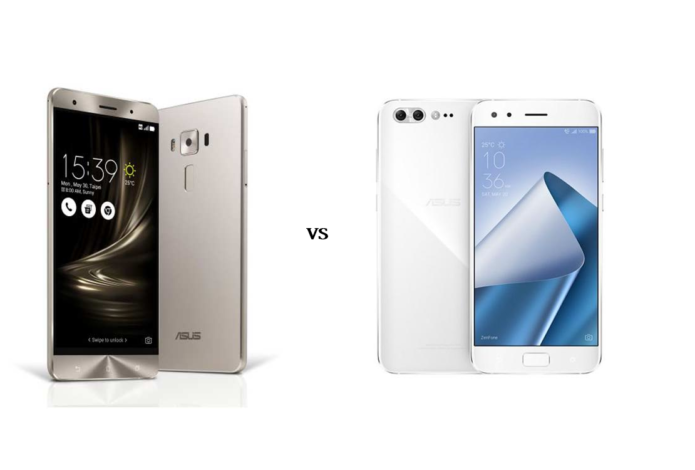
We compare ASUS’ new flagship from their offering last year
Just like in previous iterations, ASUS launched several variants of its ZenFone, each catering to a specific market (the Max line for those who prioritize battery life over everything else, and the Selfie line for those who give selfies utmost importance, for example). While the original ZenFone was marketed as a mid-range phone with killer specs for a killer price, things have changed since then, as ASUS also wants a share of the top-tier market by releasing ZenFones with flagship specs starting with the ZenFone 3 Deluxe. For this year, ASUS did a refresh with the ZenFone 4 Pro, which effectively replaces the Deluxe line. But how does the new flagship fare with last year’s model? Let’s take a quick look:
ZenFone 3 Deluxe

- Qualcomm Snapdragon 820 processor
- 6GB of RAM
- 5.7-inch full HD AMOLED display with Gorilla Glass protection, 1920 x 1080 resolution
- 64GB storage, expandable via microSD card
- 23-megapixel rear camera, Sony IMX318 sensor, 6-element lens, laser AF, PDAF
- 8-megapixel front facing camera
- Dual SIM
- 3G, LTE
- WiFi, Bluetooth, GPS, A-GPS, USB Type-C, Fingerprint scanner
- Android 6.0 Marshmallow, ZenUI 3.0
- 3000mAh battery
ZenFone 4 Pro

- Qualcomm Snapdragon 835 processor
- 6GB LPDDR4 RAM
- 5.5-inch Full HD AMOLED display, 1920 x 1080 resolution, 2.5D curved glass, with Corning Gorilla Glass
- 64GB internal storage, expandable via microSD slot up to 2TB
- 12-megapixel, f/1.7 primary rear camera with ASUS Superpixel engine, PDAF, EIS, OIS, and RAW image support
- 16-megapixel, f/2.4 secondary rear camera with 2X zoom
- 8-megapixel, f/1.9 front camera
- Dual SIM
- 3G. LTE
- WiFi, Bluetooth, GPS, A-GPS, GLONASS, Fingerprint Scanner
- Android 7.1.1 Nougat with ZenUI
- 3600mAh battery
Same RAM, better processor
Even if both models sport 6GB LPDDR4 RAM, the ZenFone 4 Pro has an upgraded processor to be competitive with other flagships like the LG G6 and the Samsung Galaxy S8/S8+. The Snapdragon 835 processor found in the ZenFone 4 Pro is claimed to be 27% faster and 40% more power efficient compared to the Snapdragon 820 processor used in the ZenFone 3 Deluxe.
Dual camera is life

Megapixels were sacrificed with the ZenFone 4 Pro (a downgrade from 23-megapixels to 12 megapixels) in order to accommodate a dual-camera set-up and a bigger aperture opening (f/1.9 for the primary camera). The primary camera
The secondary camera, having 16-megapixels and a f/2.4 aperture, has a 2x zoom, which is useful for times when you need the extra range in taking photos.
Bigger battery life
It’s quite interesting to note that even with the screen downsizing, ASUS managed to add a bigger battery in the ZenFone 4 Pro, up from 3000mAh to 3600mAh. With all the technological advancements, we expect the ZenFone 4 Pro to have a better battery life compared to the ZenFone 3 Deluxe
Only one variant

We were surprised last year that the ZenFone 3 Deluxe came out in two versions, the other being a cheaper 5.5-inch version that has downgraded specs (4GB RAMinstead of 6GB RAM, IPS display instead of an AMOLED display, and 16-megapixels instead of 23 megapixels). ASUS may be changing its strategy this year by launching only one variant of the ZenFone 4 Pro but who knows: The guys from Taiwan might surprise us.
Verdict: More powerful, but…
Undoubtedly, the ZenFone 4 Pro has better internals, specifically for the processor, camera, and battery, compared to the ZenFone 3 Deluxe. However, the challenge for ASUS here is how much they will be pricing the ZenFone 4 Pro in the Philippines, given the added features on it, and the fact that other brands like OnePlus offer similar specs for their OnePlus 5 for under Php 30,000/$583.
(unbox.ph, https://goo.gl/e6gt5g)


